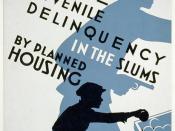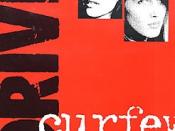The Curfew � PAGE �1�
Running Head: THE CURFEW
The Curfew: Issues on Juvenile Delinquency and Constitutional Rights
The Curfew: Issues on Juvenile Delinquency and Constitutional Rights
Introduction
Juvenile crime is becoming a threat to society as years go by. Crimes committed by children below 15 have been reported as early as the 19th century, when they faced about the same punishments as adult criminals: public shaming, incarceration, even execution by hanging. At least 10 juveniles who were under 14 at the time of their offense were executed during the 1800s, including two who were just 10 years old, says the Washington-based Coalition for Juvenile Justice (Kresnak, 2003, p. 2).
The country has attempted to decrease juvenile delinquency through public curfews. In a recent study of curfew ordinances in the 200 largest U.S. cities with populations of 100,000 or greater in 1992, Ruefle and Reynolds found a dramatic surge in curfew legislation during the first half of the 1990's.
Of the 200 cities surveyed, 93 had curfews in effect on January 1, 1990. Between January 1990 and the spring of 1995, an additional 53 of these 200 cities enacted juvenile curfew ordinances, bringing the total of those with curfew laws to 146. During the same period, 37 of the 93 cities with an existing curfew ordinance revised that legislation (Townsend & John Sims Townsend, 2006, p. 23).
However, there are lapses to curfew imposition. Considering our constitutional rights to freedom, will curfew curtail the rights of our teenagers who need time and experience to grow with maturity? Is there evidence that curfew will reduce the juvenile delinquency rate significantly? This paper focuses on those issues.
History of Curfew
The concept of curfew is not new. The word curfew [O.Fr.,=cover fire], originally meant a signal, such as the ringing of a...


